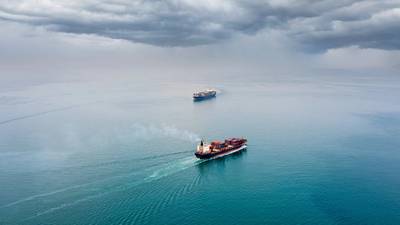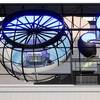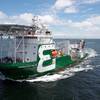Researchers Develop New Path-Following Model for Autonomous Ships
Researchers from the Korea Maritime & Ocean University have developed a new path-tracking technique for maritime autonomous surface ships (MASS).
A multi-national team of researchers, led by Assistant Professor Daejeong Kim, has studied the path-following performance of MASS using a free-running computational fluid dynamics (CFD) model combined with the line-of-sight (LOS) guidance system, at low speeds under adverse weather conditions.
MASS need to follow a pre-determined path at sea, considering factors such as obstacles, water depth and ship maneuverability. Any deviation from this path, say, due to adverse weather conditions, risks collisions or grounding.
Current methods for assessing the path-following performance of autonomous ships, however, rely on simplified mathematical ship models. These models are unable to capture the complicated interactions between the hull, propeller, rudder and external loads of ships, leading to inaccurate estimates of path-following performance. Furthermore, the IMO’s EEDI guidelines define the minimum propulsion power required to maintain ship maneuverability in adverse weather conditions.
“We employed a CFD model based on a fully nonlinear unsteady Reynolds-Averaged Navier-Stokes solver that can incorporate viscous and turbulent effects and the free surface resolution critical to path-following problems, enabling a better prediction of path-following performance,” said Kim.
The team employed the CFD-based analysis on the KRISO container ship model equipped with the autonomous LOS guidance system. The adverse weather conditions were modeled as disturbances from the bow, beam, and quartering sea waves, and these three cases were studied at three different speeds to identify the effect of forward speeds on the path-following performance.
Simulations revealed that the ship experienced oscillatory deviations in all the three cases. In the case of the bow and beam waves, these deviations decreased with an increase in propulsion power. In the case of quartering waves, there was a negligible effect of propulsion power on the deviations.
The heave and pitch responses of the ship were heavily influenced by the direction of the incident waves. Furthermore, in all three cases, the roll amplitudes were consistently below 1.5 degrees. However, the team could not ascertain the effectiveness of increasing speed in improving path-following performance.
Kim says, “The proposed CFD-based model can provide a valuable contribution to enhancing the safety of autonomous marine navigation. Moreover, it can also offer low-cost alternatives to model-scale free-running experiments or full-scale sea trials.”












